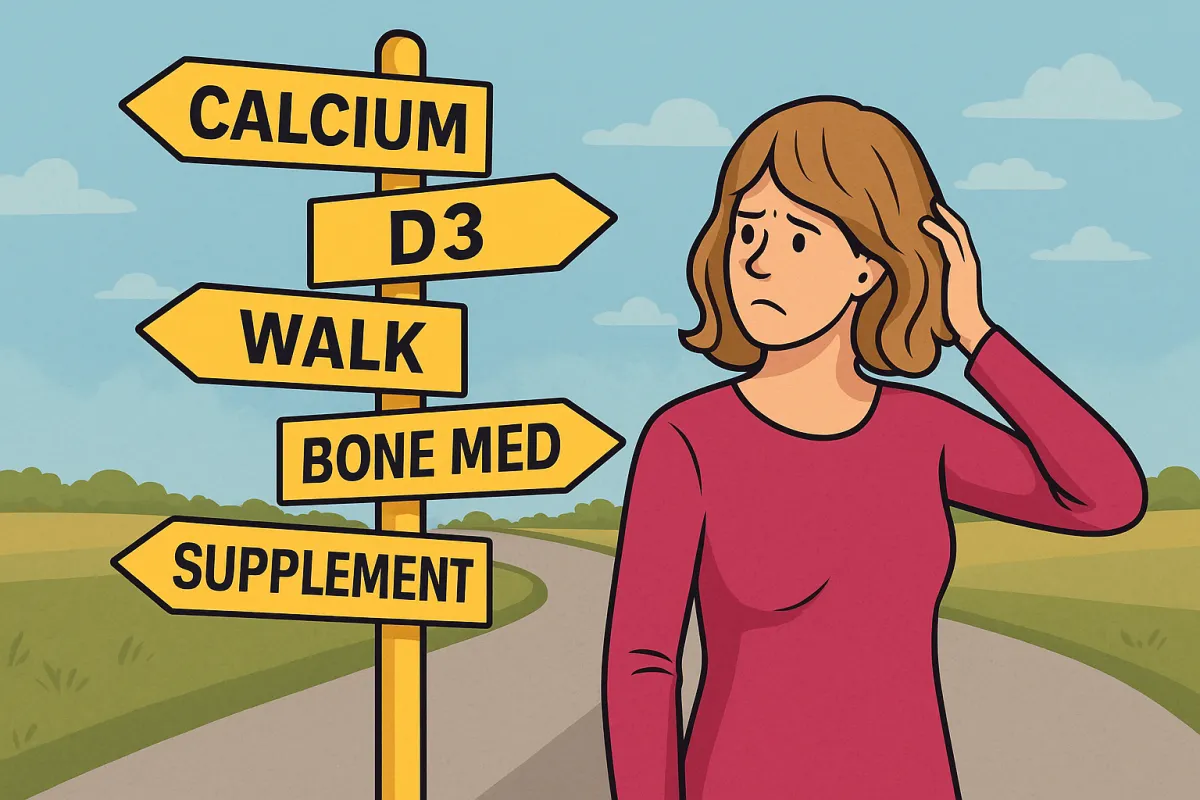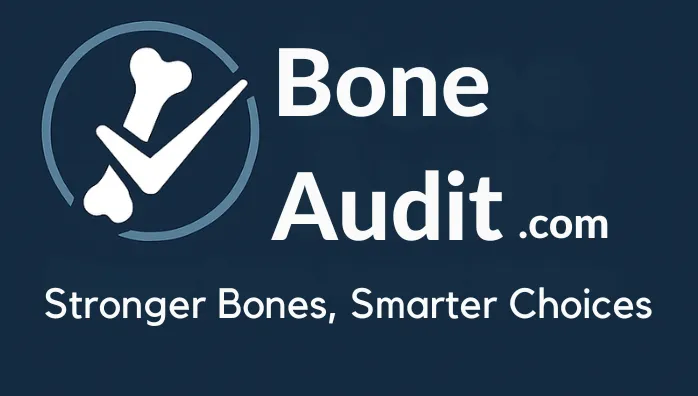
Just Diagnosed With Osteoporosis or Osteopenia? Start Here.
If you’ve just found out that you have low bone density, it’s normal to feel overwhelmed or unsure where to begin. There’s a lot of information out there — and not all of it is clear or trustworthy.
Some advice comes from medical experts. Some comes from people with strong opinions, personal stories, or products to sell. It can be hard to know who or what to believe. Take your time, stay curious, and trust your gut. You don’t need to figure everything out at once.
A Great First Step
A helpful place to start is with our free Bone Health Check-In. It only takes a few minutes and gives you a personalized report showing which major areas may need attention — like nutrition, hormones, sleep, stress, or exercise.
Your report will highlight which areas scored the lowest. That’s your clue on where to begin. Focus on those first — and you’ll be off to a strong start.
By doing this check-in, you’ll already be ahead of 99% of people who are in the same situation. Most people don’t take the time to step back and look at the full picture — but you are.
Think of Your Bones Like a Leaky Boat
Bone loss usually doesn’t happen because of just one thing. It’s more like a boat with several small holes. One hole might be low vitamin D. Another might be stress or poor sleep. If you only fix one hole, your boat might still take on water.
That’s why just trying one thing — like calcium or a new workout — might not be enough. If it didn’t help much, it doesn’t mean it failed. It might just mean another “leak” is still open.
The worst thing you can do is stop doing something that’s working, just because results are slow. It’s like plugging one hole — and then later pulling the plug out again. Water starts rushing back in, and the boat keeps sinking. Many people give up on helpful habits too soon and jump to the next “fix,” hoping for faster results. But real progress comes from plugging each leak and keeping it sealed.
It takes time. This isn’t a quick repair — it’s a journey. But if you stay steady and consistent, your “boat” can stay afloat — and even sail strong again.
What About Bone Medications?
Your doctor may recommend bone medications. In some cases — especially if your bone loss is severe or if you’ve had a fracture — this can be the right move.
Our approach is not anti-medication. We’re pro-education.
All medications come with benefits and possible side effects. It’s important to understand how they work, what risks they carry, and what questions to ask. That way, you can make an informed choice with your doctor.
Sometimes, medication is needed to stabilise things while you work on the root causes behind bone loss.
Bone Density Is Only Part of the Story
The real goal isn’t just a higher bone score — it’s avoiding fractures. That means improving your strength, balance, and coordination too.
Simple daily habits like walking, stretching, eating enough protein, and getting better sleep can all help protect your bones over time.
You’re Not Alone
Many people feel lost after being diagnosed. But there is a path forward — and it doesn’t have to be confusing.
Start with the Check-In. Focus on your lowest areas first. Learn at your own pace. Keep going.
You’ve already taken the first step — and that’s something to be proud of.
